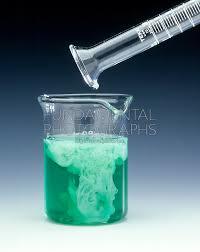Nickel Hydroxide Market Analysis Revealing Competitive Landscape and Strategic Moves by Top Players

Nickel Hydroxide Market players are operating in an increasingly dynamic and competitive environment shaped by global demand for batteries, electric vehicles, and green energy. As the market expands, leading companies are adopting strategic measures such as mergers, acquisitions, joint ventures, capacity expansions, and research partnerships to stay ahead.
Understanding the Competitive Landscape
The nickel hydroxide market consists of a mix of large multinational corporations, regional manufacturers, and niche suppliers. These companies compete on several factors including product quality, purity level, pricing, supply reliability, and technological innovation.
The most competitive segment of the market is battery-grade nickel hydroxide, where purity and consistency are critical. Manufacturers that can meet the stringent requirements of electric vehicle (EV) and energy storage system producers have a clear advantage.
In recent years, competition has intensified due to the rapid growth in battery demand, forcing suppliers to enhance production capacity, secure raw materials, and invest in cleaner, more sustainable manufacturing processes.
Key Players Shaping the Market
Several global companies dominate the nickel hydroxide space. Some of the leading players include:
-
Sumitomo Metal Mining Co., Ltd. (Japan): A major producer of high-purity nickel hydroxide used in automotive and industrial batteries. The company is known for its integrated operations—from mining to refining.
-
Norilsk Nickel (Nornickel) (Russia): While primarily known for nickel and palladium production, the company supplies key materials for hydroxide processing. Its wide mining base gives it an edge in raw material access.
-
Jilin Jien Nickel Industry Co., Ltd. (China): One of the largest Chinese producers involved in nickel compounds and hydroxide. The company supplies domestic battery manufacturers and exports globally.
-
Umicore SA (Belgium): A key player in recycling and advanced battery materials, Umicore is investing heavily in clean and sustainable nickel hydroxide production.
-
LG Chem and Samsung SDI (South Korea): Though primarily battery manufacturers, these companies are forming partnerships with hydroxide suppliers and investing in joint material development.
In addition to these, several mid-sized companies in China, India, and Southeast Asia are expanding rapidly to meet growing regional demand.
Strategic Moves by Leading Companies
The nickel hydroxide market is witnessing a wave of strategic moves aimed at strengthening global positions. Some of the key strategies include:
1. Capacity Expansion Projects
With the EV and battery storage boom, many companies are expanding their production capabilities. Chinese firms are particularly aggressive in scaling up capacity, both domestically and through overseas investments in Indonesia and Africa.
Japanese and Korean companies are upgrading existing plants to produce higher-purity grades that meet EV standards. These expansions are aimed at reducing dependence on external suppliers and controlling costs in the long term.
2. Vertical Integration
Many battery manufacturers are moving upstream into raw materials to ensure stable supply. This has led to joint ventures between battery giants and mining/refining companies.
For example, automakers like Tesla and Volkswagen are forming alliances or directly sourcing nickel hydroxide from mining partners. This vertical integration helps control input costs and improve supply chain security.
3. Focus on Sustainability
Environmental, Social, and Governance (ESG) standards are influencing purchasing decisions in the battery supply chain. Nickel hydroxide producers are under pressure to reduce emissions, manage waste, and use ethical sourcing practices.
Top companies are now investing in green technologies, water recycling systems, and renewable energy sources for production facilities. Firms that meet global sustainability benchmarks gain preferred supplier status from OEMs and global brands.
4. Mergers and Acquisitions
M&A activity in the market is growing as companies look to acquire niche players with specialized capabilities or access to raw materials. These acquisitions help diversify portfolios, enter new regional markets, or gain advanced production technologies.
Smaller producers are being acquired by larger players seeking to secure market share and accelerate growth in underserved regions.
5. R&D and Product Innovation
To stay competitive, companies are investing in R&D to develop advanced forms of nickel hydroxide with better conductivity, cycle life, and environmental performance. Research is focused on nanostructured materials, co-precipitated compounds, and doped hydroxides for next-gen battery technologies.
These innovations allow suppliers to cater to premium segments of the battery market and offer customized solutions to EV manufacturers.
Regional Competition and Specialization
Regional specialization is emerging as a key theme in the nickel hydroxide market:
-
China dominates in volume and cost efficiency. It houses numerous manufacturers focused on price-sensitive and large-volume orders.
-
Japan and South Korea specialize in high-purity materials for premium battery markets.
-
Europe and North America are investing in building local capacity to reduce import dependence and align with clean energy policies.
This regional differentiation is helping companies target specific customer needs while building on local strengths.
Challenges Ahead
Despite the active competitive environment, several challenges remain:
-
Volatility in nickel prices affects profitability.
-
Regulatory uncertainties around mining and material handling.
-
Geopolitical tensions can disrupt trade and supply agreements.
-
Environmental regulations may increase compliance costs.
However, companies with strong strategic planning, agile operations, and sustainable practices are better positioned to navigate these risks.
Conclusion
The nickel hydroxide market is undergoing rapid change, driven by soaring demand and fierce competition. Top players are expanding capacity, forming strategic alliances, and focusing on sustainability to secure their position. As battery applications continue to grow, competition will intensify, but so will opportunities for innovation and differentiation.
Companies that align with market trends and invest in future-ready technologies will lead the next phase of global nickel hydroxide growth.
- Art
- Causes
- Crafts
- Dance
- Drinks
- Film
- Fitness
- Food
- Games
- Gardening
- Health
- Home
- Literature
- Music
- Networking
- Other
- Party
- Religion
- Shopping
- Sports
- Theater
- Wellness


